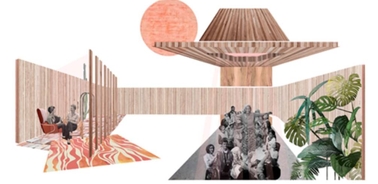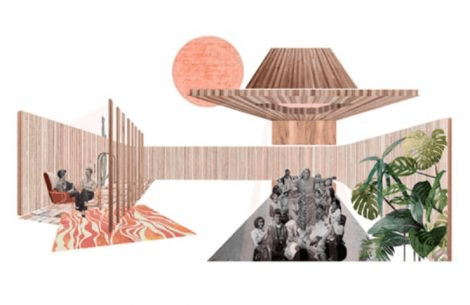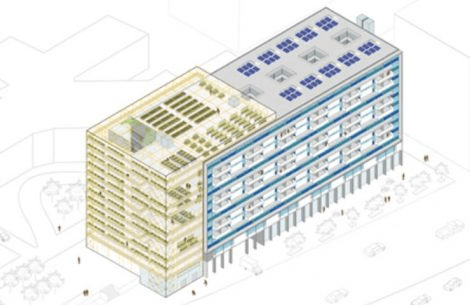Extra-Ordinary Projects at Design Studio VI: An Opportunity to Explore Diverse Architectural Responses to Social Issues

Every semester, the professors propose focusing on a specific demographic, placing the user at the center of the design process and researching beyond the normative understanding of the discipline of architecture.
 Figure 3 – María González
Figure 3 – María GonzálezThe Design Studio VI course directed by Professor Romina Canna and delivered by Professors Marcela Aragüez and Patricia Medina within the Bachelor in Architectural Studies focuses on “Extra-Ordinary Projects,” an exploration of how the inherent tools of our discipline could respond and react to social and cultural challenges. Every semester the professors propose focusing on a specific demographic and thorough research of their needs, demands, legal and social frameworks though the lens of other disciplines such as sociology, psychology and economics as the starting points for a project. The goal of the course is placing the user at the center of the design process, moving away from processes merely based on formal manipulations or already existing programs or proven typologies.
"Over the coming decades, architecture should play a key role in providing spatial responses to growing social and cultural challenges, going beyond the normative understanding of the discipline"
Professor Romina Canna
"Over the coming decades, architecture should play a key role in providing spatial responses to growing social and cultural challenges, going beyond the normative understanding of the discipline," explains Prof. Canna, adding: “for this we need extra-ordinary projects for extra-ordinary issues”.
 Figure 2 – María González
Figure 2 – María GonzálezThis semester the students are focusing on people with disabilities. Disability is a condition that affects around 15% of the population: 1 billion people worldwide, according to the World Health Organization. In addressing this issue, the WHO makes an interesting point on what disability truly is about: “Disability results from the interaction between individuals with a health condition, … with personal and environmental factors, including negative attitudes, inaccessible transportation and public buildings, and limited social support.” With this in mind, Prof. Canna explains one of the foundations for this semester’s course: “Seen through this lens, disability is not only a health condition but also the result of the interaction with the actual physical, spatial, cultural, and social condition of our environment, and we have a responsibility in finding how architecture could contribute to address this issue beyond the normative response such as ramps, adapted bathrooms, and special dimensions. We have the tools to propose change and to take a more comprehensive approach to a sensitive issue. ”The ongoing projects are covering a diverse range of people with disabilities from ASD to Down’s Syndrome, cerebral palsy or physical impairments, shaping programs based on their specific needs and demands while considering external issues such as institutional frames or existing facilities and initiatives.
“We have the tools to propose change and to take a more comprehensive approach to a sensitive issue.”
Professor Romina Canna
Every semester brings a new challenge
 Figure 1 – June Aoun
Figure 1 – June AounThe Design Studio VI course was conceived in 2017 to react to today’s specific social issues. In the spring semester of 2021, this was highlighted by the effects of the pandemic on the elderly and their situation in nursing homes, which was occupying the front pages of newspapers and newsfeeds. Consequently, the course focused on this sector of the population. “The nursing home is a building typology that has rarely been specifically reflected upon in architectural design. It is often conceived as a half-hospital, half-hotel, without a careful reflection of the actual spatial needs of this sector of the population, without considering that within this group there is a broad diversity of social, physical and cultural needs”, explains Romina Canna, the director of the course. The objective of the course was to think about alternative models to existing nursing homes based on a more precise understanding of this population, its diversity, and their needs and demands. Students engaged in a passionate discussion about architectural strategies tailored to respond to the physical and social needs of the elderly (Figure 1-June Aoun).
In the Spring Semester of 2020, students focused on women who are victims of domestic violence, a persistent social issue in Spain and other countries. “Thinking about processes of healing, their social re-insertion, and their productive and family life, the projects offered a different perspective on a topic usually not addressed enough by architecture”, said Prof. Canna. (Figures 2 and 3-María González). “Every semester brings a new challenge, and with it, a possibility to think about the role of architecture in a complex world”, she adds.